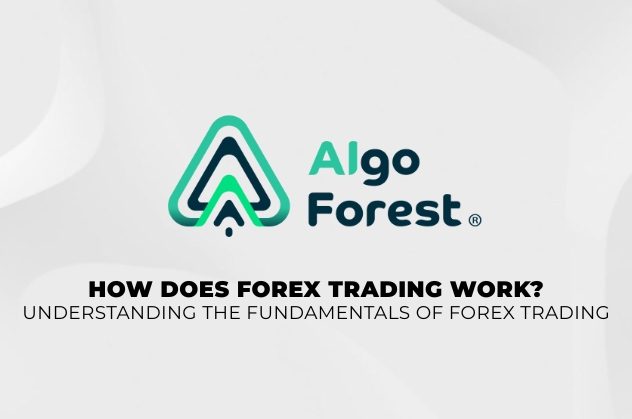


As one of the largest and most liquid financial markets in the world, forex trading reaches a staggering daily trading volume of USD 6.6 trillion, attracting countless investors. Yet, for many beginners, the question remains: How does forex trading actually work? And is it really as high-risk and difficult to master as people say?
This article will guide you step by step through the structure and mechanics of the forex market, helping clear away doubts during your learning process. Whether you are a beginner or a trader with some experience, you will find practical insights and strategies here.
The core of forex trading is exchanging one currency for another, known as a currency pair.
For example:
EUR/USD (Euro/US Dollar) represents how many US dollars are needed to purchase one euro.
Each currency has a standard abbreviation, such as EUR for the euro and USD for the US dollar. By observing the price of these pairs, traders can assess the exchange rate and make buy or sell decisions.
Since forex prices are determined by market supply and demand, they fluctuate 24/7, creating abundant opportunities for traders.
📌 Pro Tip: Always check real-time exchange rates from trusted forex websites before trading.
In forex trading:
Buying a currency pair: You expect the base currency (the first one) to appreciate.
Selling a currency pair: You expect the base currency to depreciate.
Example:
If you believe the euro will strengthen against the US dollar, you buy EUR/USD.
If you expect the euro to weaken, you sell EUR/USD.
Correctly identifying market trends is essential and a fundamental skill every trader must develop.
The spread is the difference between the buying price (bid) and the selling price (ask). It is measured in pips (points in percentage).
For example:
Buy price: 1.0740
Sell price: 1.0736
Spread = 0.0004 = 4 pips
While small per trade, spreads add up and can significantly affect long-term profits. Understanding spreads helps traders better predict profit/loss points and trading strategies.
Margin: The minimum amount of capital required to enter a trade.
Leverage: Allows traders to control a large position with relatively small capital.
Example:
With a 0.5% margin ratio, you only need 500 MYR to control a trade worth 100,000 MYR.
🔺 Risk Alert: While high leverage can maximize profits, it also magnifies losses. Beginners should use it cautiously.
Forex markets are fast-moving and information-heavy, which can overwhelm new traders. The good news is that AI-powered trading systems can help.
24/7 market monitoring
Automated analysis and execution
Removes emotional bias and human error
For beginners, combining personal judgment with AI-assisted systems can accelerate learning and improve results.
👉 Enroll now and learn how to:
Apply Flash, S10, SMA, MKD, and Dragon Wave for real market profits
Adapt auto-trading systems to Malaysia’s unique financial environment
Achieve more accurate, faster, and safer trading automation
🎯 Limited seats available—don’t miss this exclusive training tailored for Malaysian traders!
Ready to trade smarter?
Discover the CCY Power Indicator, your ultimate tool for identifying strong and weak currencies in real time.
Whether you’re a beginner or a seasoned pro, this powerful tool simplifies decision-making and helps boost performance in both forex and gold trading.
👉 Get CCY Power today and start making smarter trading decisions!
For decades, algorithmic trading was the secret weapon of Wall Street hedge funds and big...
LEARN MORE >>Algorithmic trading once reserved for elite hedge funds and Wall Street quants is now going...
LEARN MORE >>Invited to landmark meeting with Abu Dhabi Investment Office, as its Forex Forest ecosystem empowers...
LEARN MORE >>




